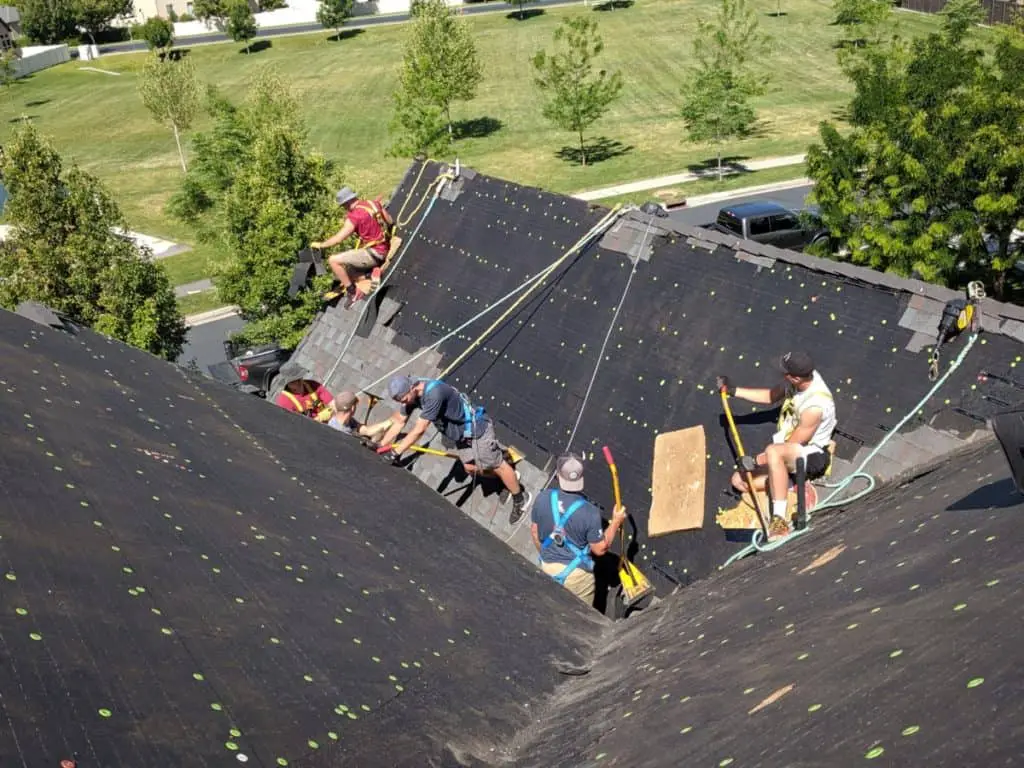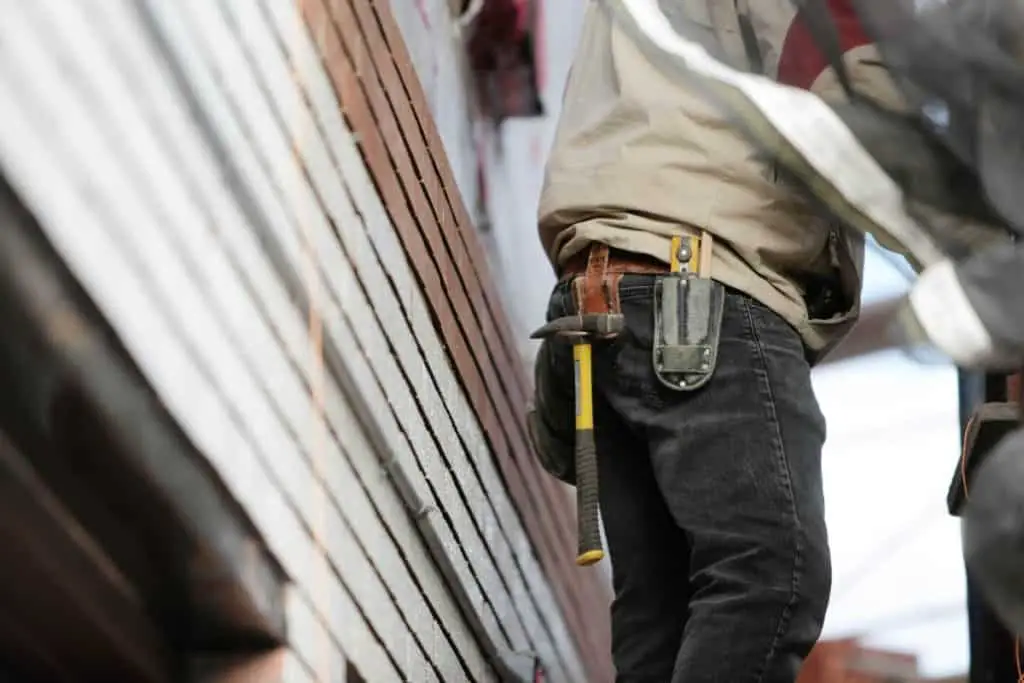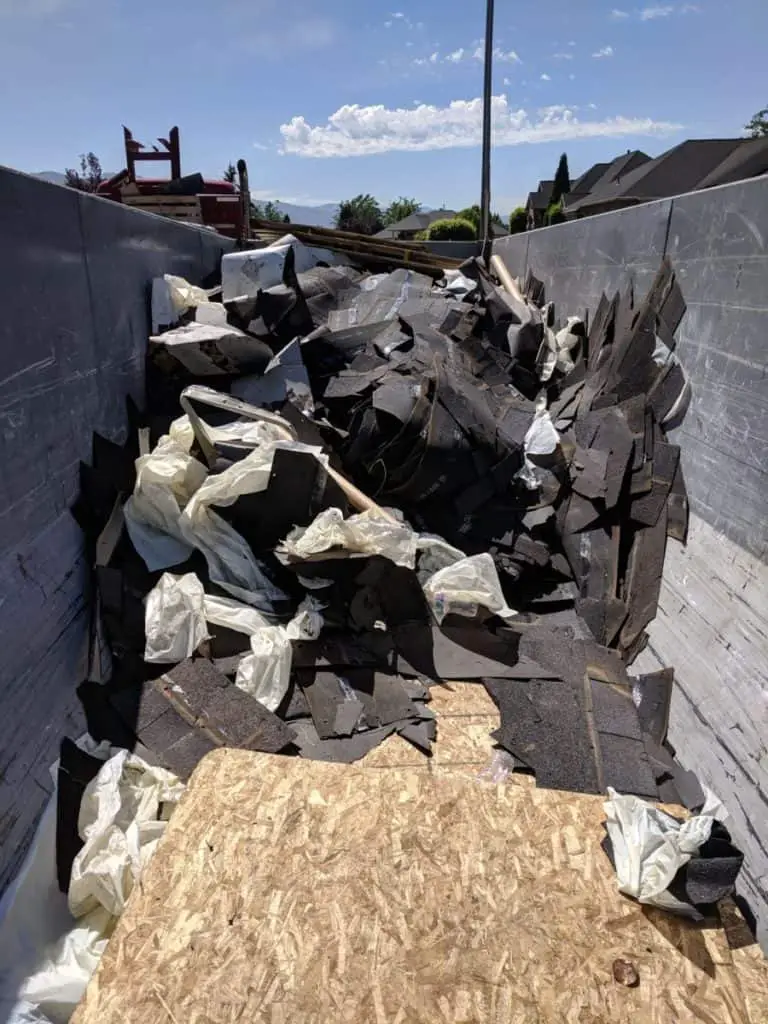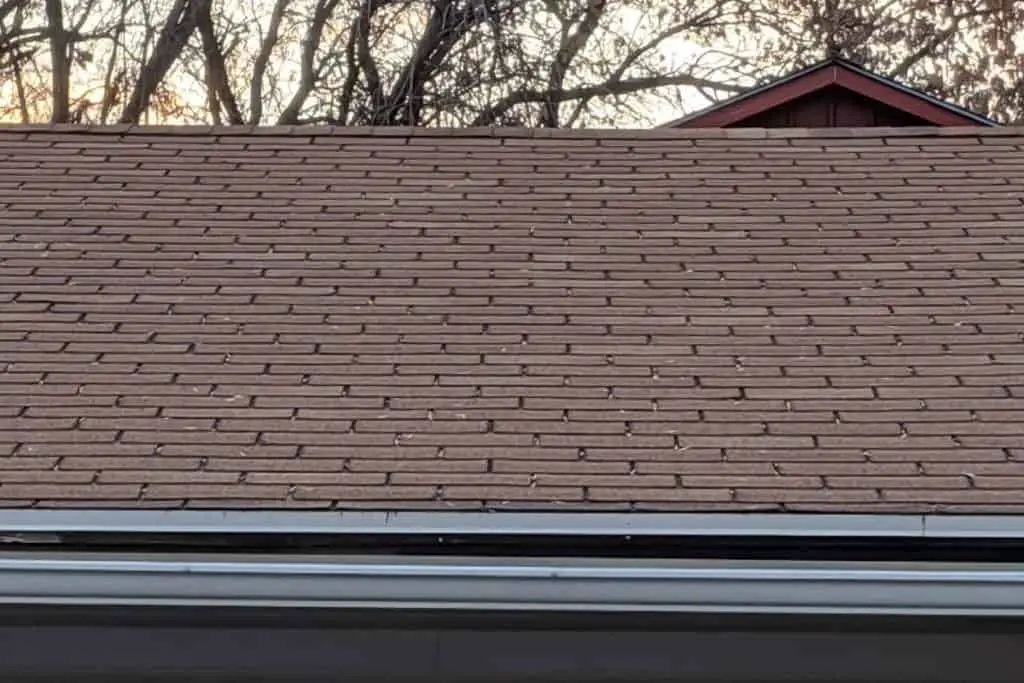
Having a new roof installed is a significant project, not to mention the expenses. However, most homeowners have to do this at least once in their lifetime.
The question is: Should I do a complete tear-off or just a shingle overlay? These two options will depend on factors like the building regulations, the roofing material on the current roof, etc. Nonetheless, in some instances, a roof overlay or a roof tear-off are options that the roofing contractor might suggest.
When you choose to have a roof overlay, the roofer will install the new shingles over the existing roof shingles. In the case of a roof tear-off, the roofing contractor will install the new roof after removing the current roof shingles.
Both these roof installation methods come with pros and cons, and the best option for your home will depend on many factors. Since not all roofs are the same, it is best first to understand the advantages and disadvantages of each so that you can make an informative decision.
Pros: Roofing Tear Off
1. Allows for Thorough Inspection
When the old roof is torn off down to the wood, the roofing team will have the opportunity to get a decent look at the condition of your roof underlayment and decking. If there are any deeper-rooted structural problems like rotten wood, which is common after leaks, it can be repaired. This will give you peace of mind that your roof will be in perfect condition once the project is done.

2. Customization Is Possible
If you wanted to opt for different roofing materials, it is best to do so when the old roof is torn off. From rubber slate to ceramic tile, the options are endless. Since you are getting rid of the old and replacing it with something new, there are no limitations.
3. Everything Is Brand New
Everything on your roof will be brand new, from the foundation of the roof and up! In other words, new flashings can be installed, and high-risk areas like chimneys can be adequately repaired and sealed. This will leave your roof watertight for years to come.
4. Increase The Resale Value Of Your Home
There is no doubt that a nice looking new roof adds curb appeal! A new roof will, for sure, increase the resale value of your home, and it also acts as a significant selling point.
5. Longer Roofing Lifespan
If you are not planning to sell your home in the near future, then a roof tear-off is probably the best way to go. This is because a new roof is most likely to last longer than a roof overlay.
6. Easy Maintenance
Since all the underlying roofing problems will be taken care of during the roof tear-off, the maintenance of your new roof will be easier. You will not have to deal with unexpected leaks or structural issues down the line. As long as the roof was installed properly by a trusted contractor. I recommend checking out Home Advisor to get several bids from a local trusted contractor near you.
Cons: Roof Tear-Off
1. More Expensive
There is no doubt that a roof-tear-off will cost a lot more than a roof overlay. More labor is involved, more materials will be needed, and the old materials’ disposal also comes with a cost. The disposal cost and tear off cost may be reduced if you are willing to do the work yourself. For example, one gentleman tore off his roof shingles and disposed of it himself then had us dry it in and re-shingle it. This reduced the amount of labor and disposal expenses he was paying.
2. More Time Consuming
The process of tearing off the old roof will add more time to the entire project. Therefore, homeowners will have to live through a construction zone for a more extended period. From my experience this period can usually last anywhere from 1-2 weeks. This will vary depending on roof size, crew size, and delivery of materials.
Pros: Roof Overlay
1. Lower Costs
Since the process of a roof overlay is merely adding another layer of shingles on top of the existing roof, the labor cost will be considerably less. There won’t be any roof repairs made to the underlayment of the existing roof, and no disposal of old shingles will be needed., which makes the entire roof overlay project less expensive.
2. Shorter Construction Length

If you need a new roof very quickly, then a roof overlay will take less time. You will not need to pay for alternative lodging or deal with the added hassle while your roof is under construction since a roof overlay is much faster to complete.
3. Secondary Barrier
One of the benefits of having a new roof installed over an existing roof is that your home will have two protective barriers. This is primarily an advantage if the existing roof is still in good condition. The old roof will cushion the new one and act as a secondary barrier against wind and in the case of water getting through the new shingles.
4. Same Quality At A Lower Price
A roof overlay done correctly will look just as good as new and last just as long. This means that you are getting the same quality at a lower price and for a lot less hassle upfront.
5. Less Messy

Since there will be no tearing-off of old shingles, there will be no used roof debris and materials scattered over your property. A roof overlay is generally a safer process and a cleaner alternative for a roof installation. However, there will still likely be some debris from the new roof that naturally comes from cutting and fitting shingles to meet certain aspcets of your roof.
Cons: Roof Overlay

1. Added Weight To Your Home
When adding a new layer to your roof, you are adding extra weight to the top of your home as well. While this might not be a problem for some, the added weight can put the roofs’ structural integrity into question.
2. Risk Of Unevenness
If the existing roof is relatively old, it might be uneven due to years of wear and tear. The old shingles may have curled up and the wood decking underneath may have soft spots that create dips between the trusses. The risk of reroofing over a weathered roof might not look as good as a brand new roof. If the roof overlay process is not done correctly, the shingles might look uneven.
3. Risk Of Shorter Lifespan
Extra heat can get caught by the additional layers of shingles. This can cause the new shingles to curl and break down faster, leading to a shorter roof lifespan.
4. Possible Issues With The Roof Underlayment
During the initial roof inspection, before the roof overlay is done, the roofer will not see what is underneath the existing shingles. If, for instance, there are problems with the decking of the roof, it will be unknown, which can cause more significant problems later.
5. More Roof To Tear Down Next Time
Eventually, an entire roof replacement will have to be done. Local building codes will determine how many layers you can have until you need to do a complete tear off. Usually the max will be 2-3 layers. When it comes time to tear it off two layers of roofs. You will have more debris to dispose of, double the labor, and increase the costs.
4. Trickier Maintenance
When a roofing problem like a leak arises, the water will move through both layers of shingles, which means tracking the problem’s source will be more tricky. By having another layer of shingles, you are adding another layer of complexity to your roof.
5. Could Lower Resale Value
If you plan to sell your home, then a roof overlay could decrease your home’s resale value. Homebuyers are usually cautious about buying homes that have two layers of roofs because it means they will have to pay additional labor costs the next time the roof needs to be replaced.
Related Questions:
Which Is Best, Roof Tear-off Or Roof Overlay? Many roofing contractors suggest that a roof tear-off is the best way to go since it reduces the risk of underlying issues turning into extensive roofing problems. When comparing the pros and cons of a roof tear-off vs. a roof overlay, it is evident that a roof tear-off is a better option.
Nonetheless, this does not mean a roof tear-off is the best option for your home and budget. If your existing roof is in good condition and has not caused you many problems, a roof overlay can be a better option and help you save money.
Do You Need A Permit For A Roof Overlay? Permission for a roof overlay will depend on your area’s building code and regulations. If re-roofing is allowed in your area, a reroofing permit will most likely be needed. Failing to obtain such a permit can lead to a delay in work and even a fine.
The roofing contractor is responsible for pulling a re-roofing permit and stating the license’s details in the roofing contract. Be wary of roofers who are not upfront with you about the re-roofing permit that is needed or those who insist that you pull the permit yourself.
An authoritative roofer will obtain a re-roofing permit to ensure the job is done by the book, which provides an added insurance on your behalf.
Can My Home Handle The Weight Of Extra Shingles? There is no doubt that an extra layer of shingles will add more pressure to your home. The second layer of shingles can negatively impact your roofing structure and even compromise your home walls.
However, a professional roofer who knows their stuff will take the extra shingle weight into consideration. Meaning that if the roofer calculates that your home is not suitable for two layers of roof, he will suggest a roof tear-off instead.
Most municipalities do grant permission for a multi-layer shingle roof, but only after a proper inspection was made to ensure safety of such a process. Therefore, it is essential to work with a professional roofer who has experience in roof overlays.
Will A Roof Overlay Influence The Manufacturer’s Warranty Or Home Insurance? Unfortunately, many manufacturers will not cover multi-layered roofs if the application does not allow the shingles to lie flat. Shingles that do not lay flat will ensure proper coverage, and they can also easily suffer wind damage.
Another problem a homeowner with a roof overlay might face is the cancellation of their home insurance policy. While some home insurance companies do cover homes with an added shingle layer, many do not. This is because of cost and weight.
Therefore, before having an extra shingle layer installed, homeowners must check with the insurance company whether they cover this.
What Upgrades To Consider When Installing A New Roof? When you are tearing down the old shingles and installing a new roof, you have the opportunity to upgrade every detail of your roof such as roofing material type, flashing types, ventilation systems, and more.
